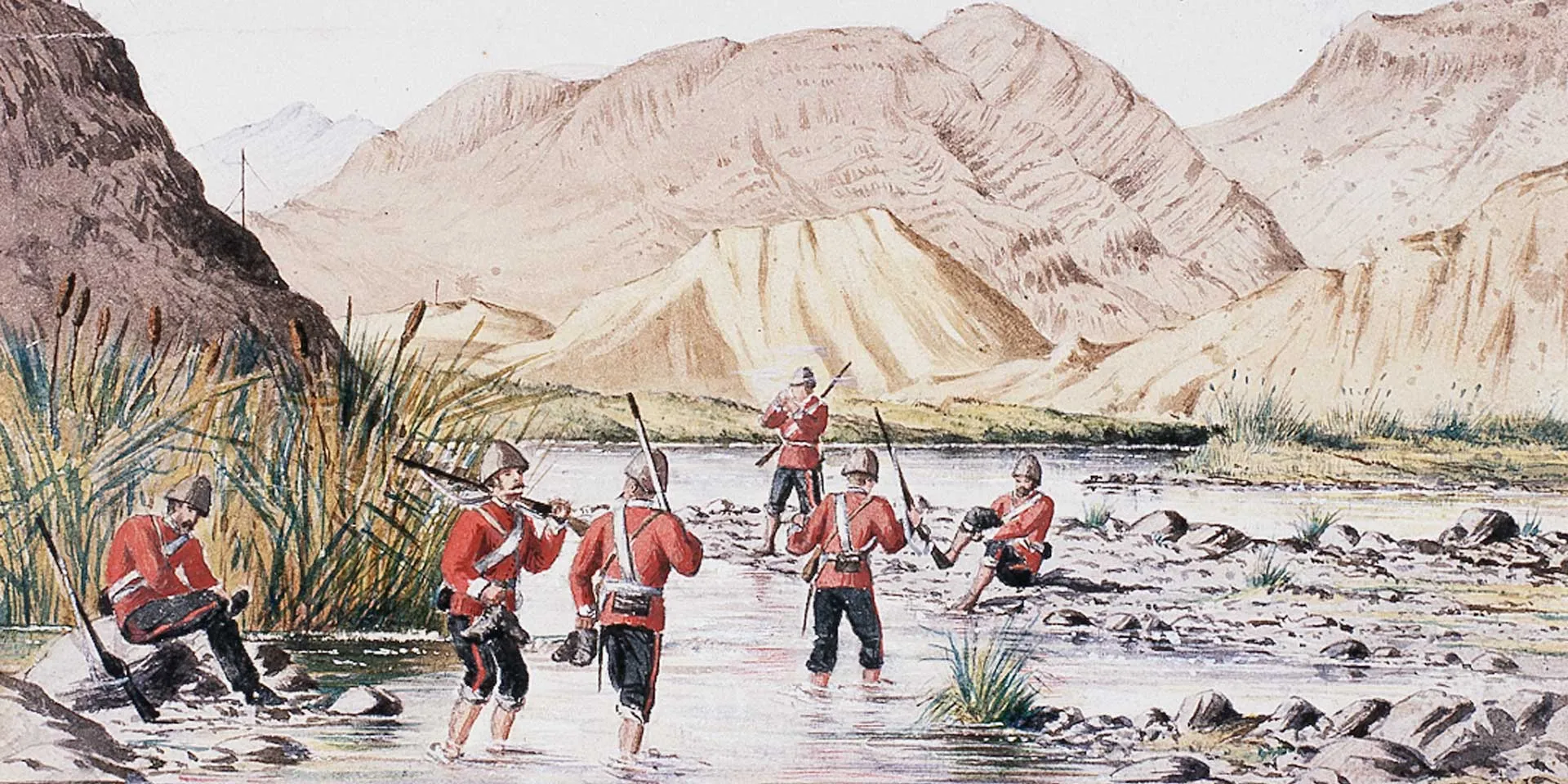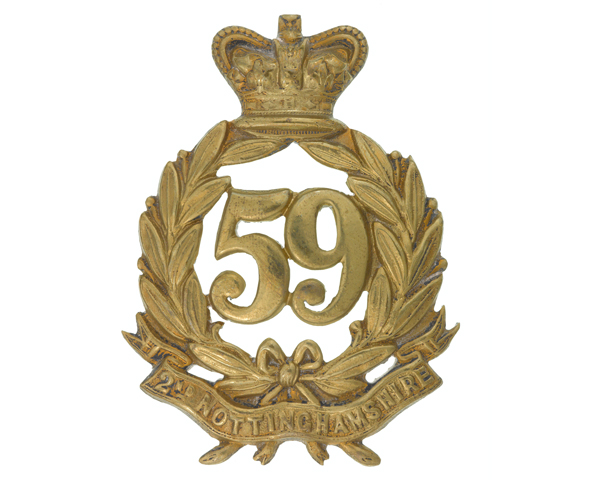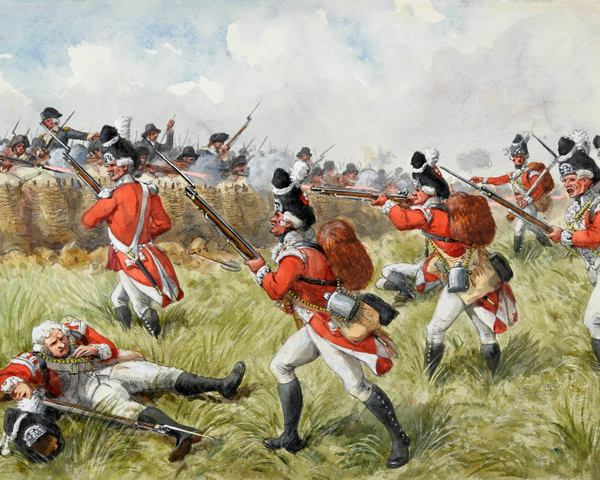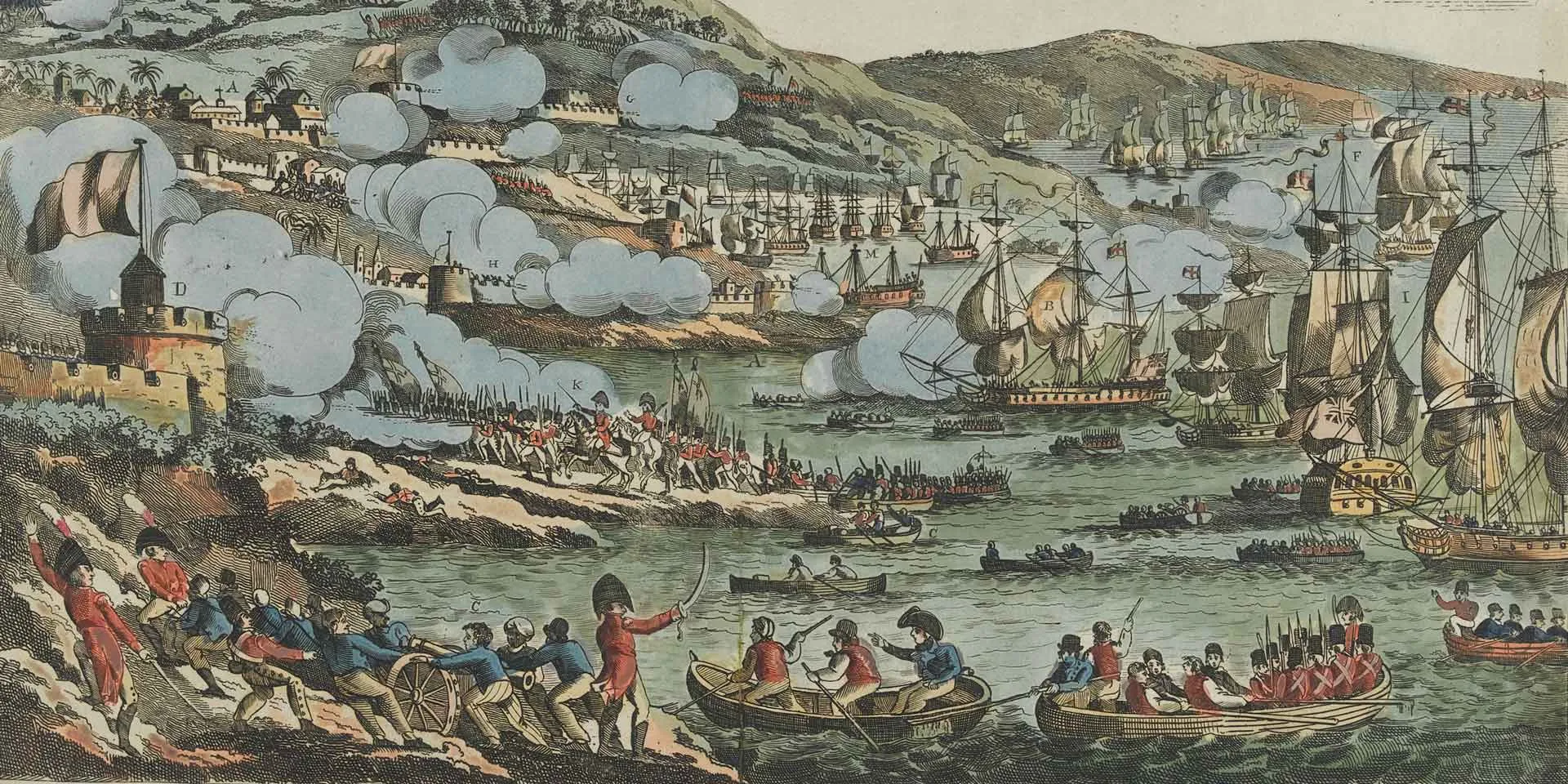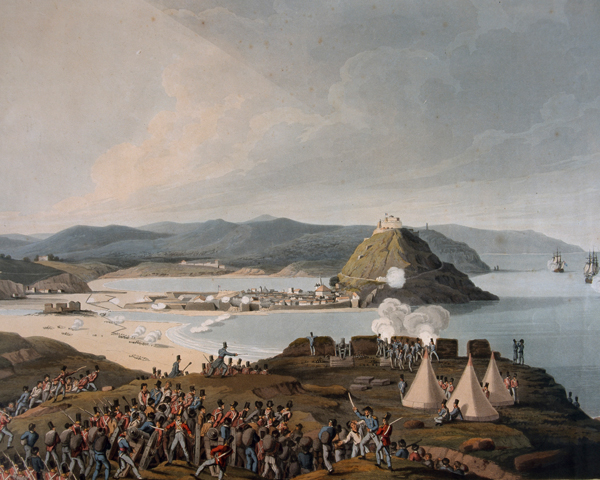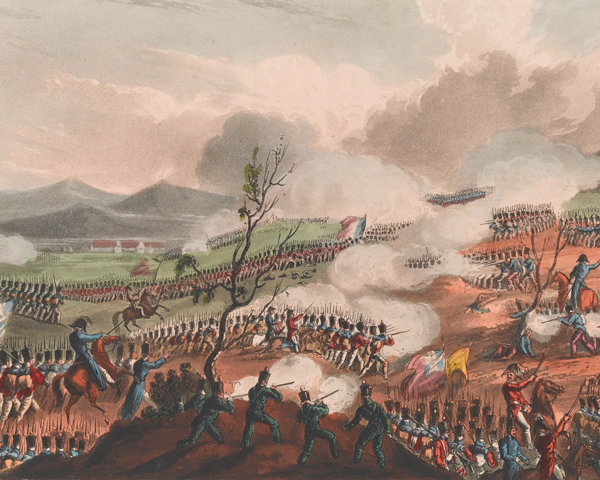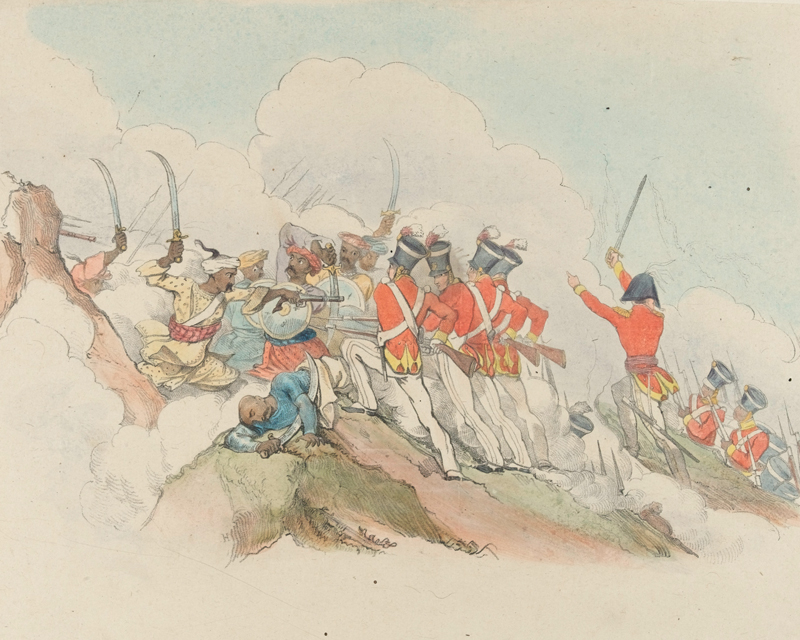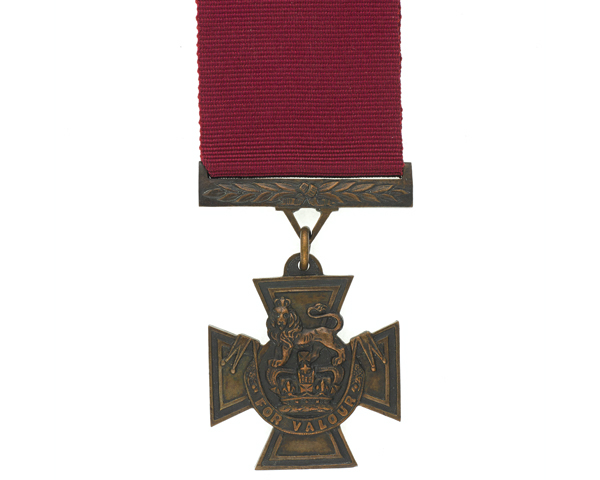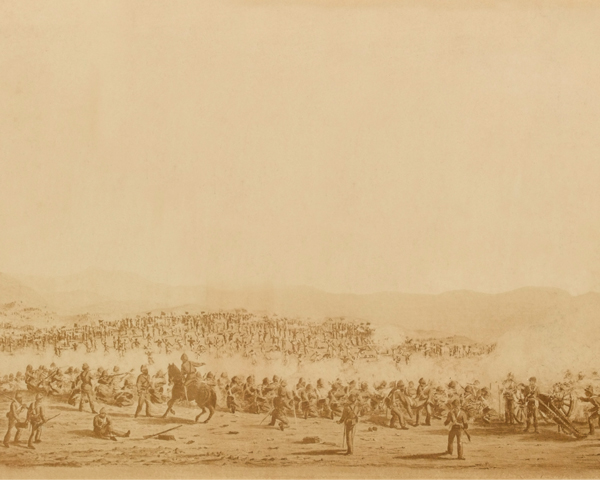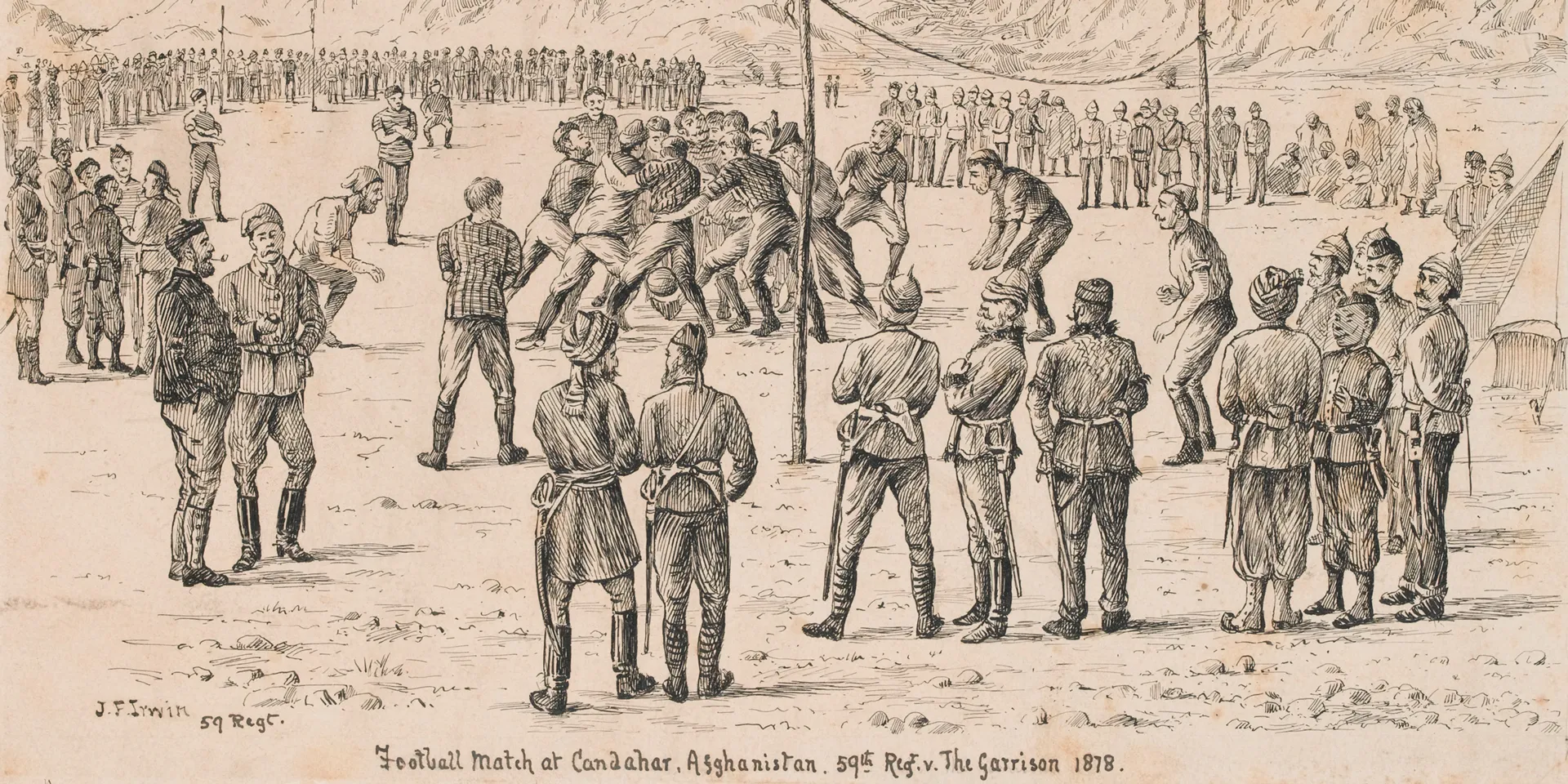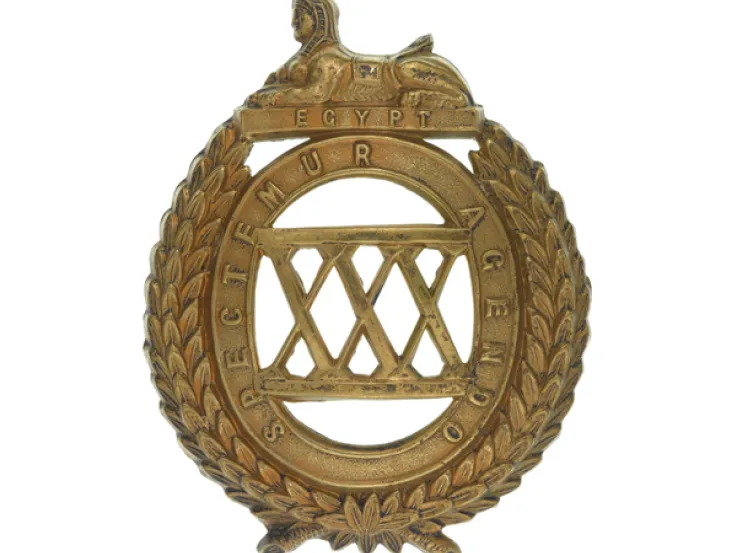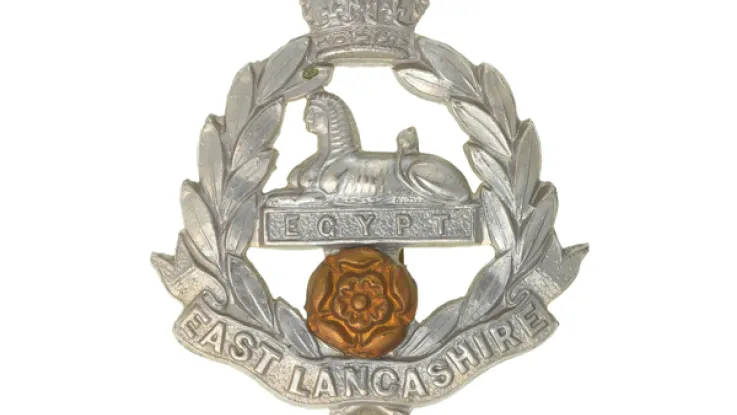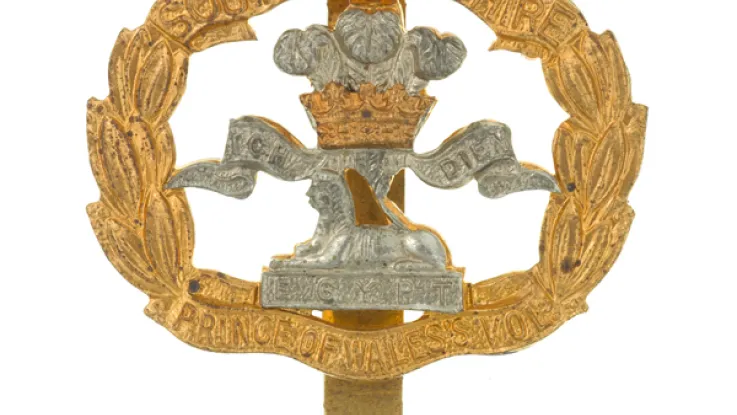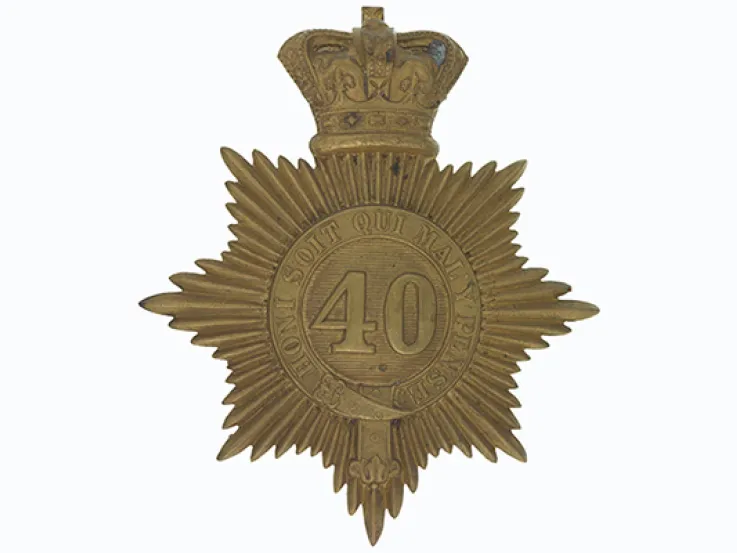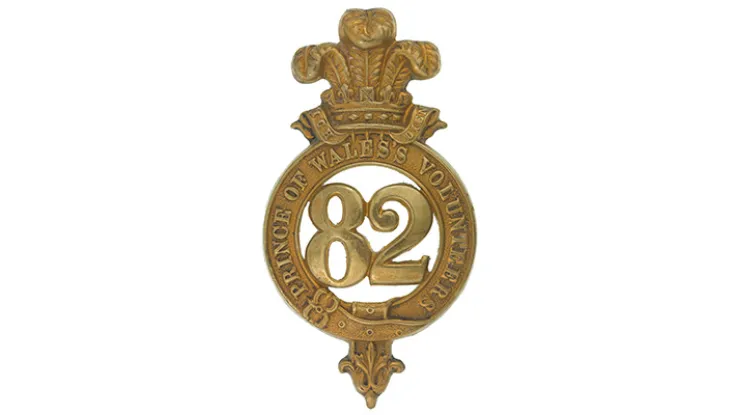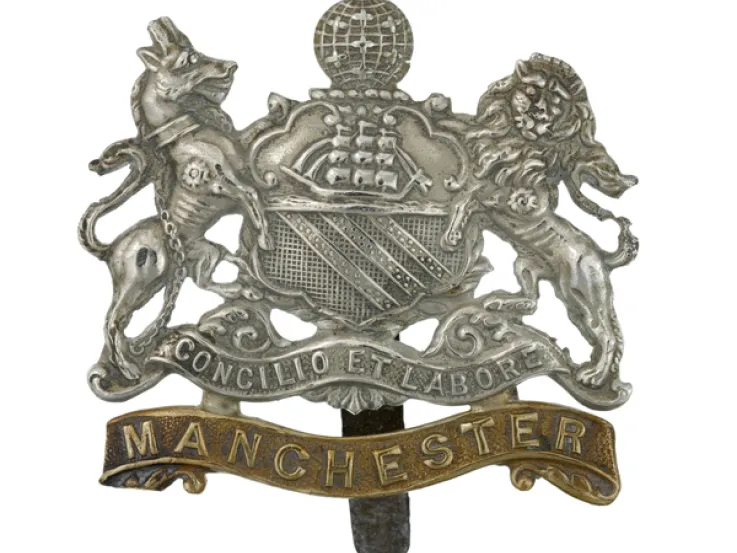Origins
In 1755, as the threat of war with France grew, a new regiment was raised in Nottinghamshire and Leicestershire by Lieutenant-General Charles Montagu.
Initially numbered 61, this rose to 59 in 1756 when the old 50th and 51st Regiments were disbanded. Soon after being formed, it was sent on garrison duties to Ireland.
America
In 1763, the regiment moved to Nova Scotia, and then to Boston, Massachusetts in 1772. It was therefore already in theatre on the outbreak of the American War of Independence (1775-83). The 59th fought at Bunker Hill (1775), but by 1776 had so few survivors that it had to return to Britain to re-recruit.
It remained in Britain until 1782, when it was sent to Gibraltar, then under siege by America’s French and Spanish allies. It remained there until 1792, during which time it was given its county association with Nottinghamshire.
Revolutionary and Napoleonic wars
In 1794, the regiment was sent to fight in Flanders during the French Revolutionary Wars (1793-1802). The following year, it moved to the West Indies, fighting the Maroons at St Vincent (1796), before returning to Britain in 1802.
In 1804, the regiment recruited a 2nd Battalion in Derbyshire. This remained in England, Ireland and the Channel Islands for its first four years.
In 1806, 1st Battalion took part in the recapture of the Cape of Good Hope. The following year, it moved to India for four years. It then helped capture the Isle of France (Mauritius) in 1810, before taking part in the invasion of the Franco-Dutch-held island of Java in 1811.
Peninsula
In 1808, 2nd Battalion joined the Peninsular War (1808-14), serving at Corunna (1809) before being evacuated to Britain. The following year, it took part in the abortive Walcheren Expedition to Holland. It returned to the Peninsula in 1812, fighting at Vitoria, San Sebastian, Bidassoa, Nivelle and the Nive in 1813.
After Napoleon’s abdication in 1814, 2nd Battalion was initially sent to Ireland. When he escaped from Elba the following year, however, the battalion was posted to Belgium. It did not fight at Waterloo, but formed part of a brigade covering the Duke of Wellington’s right flank. It was disbanded the following year.
India
In 1815, 1st Battalion returned to India, where it fought in the Third Maratha War (1817-18) and then helped storm the fortress of Bhurtpore (1826) during the Jat War (1825-26). It returned to Britain in 1829.
The regiment spent the next two decades garrisoning Ireland, England, Malta and the West Indies.
Victorian wars
In 1849, the regiment was sent to China to help enforce the treaty terms following the First Opium War (1839-42). While garrisoning Hong Kong it suffered greatly from outbreaks of disease. Eight years later, it became the only English regiment present at the capture of Canton (1858) during the Second Opium War (1856-60).
In 1858, it moved to southern Africa for three years, followed by six years of home service. Its final overseas posting was a return to the Indian subcontinent from 1867. While there, it fought in the Second Afghan War (1878-80), most notably at the Battle of Ahmed Khel (1880).
Legacy
The regiment returned home from India in 1880. It was then merged with the 30th (Cambridgeshire) Regiment of Foot to form The East Lancashire Regiment.
Regimental museums
The National Army Museum works with a network of Regimental and Corps Museums across the UK to help preserve and share the history and traditions of the Army and its soldiers.
Discover more about the 59th (2nd Nottinghamshire) Regiment of Foot by visiting the Lancashire Infantry Museum in Preston.

